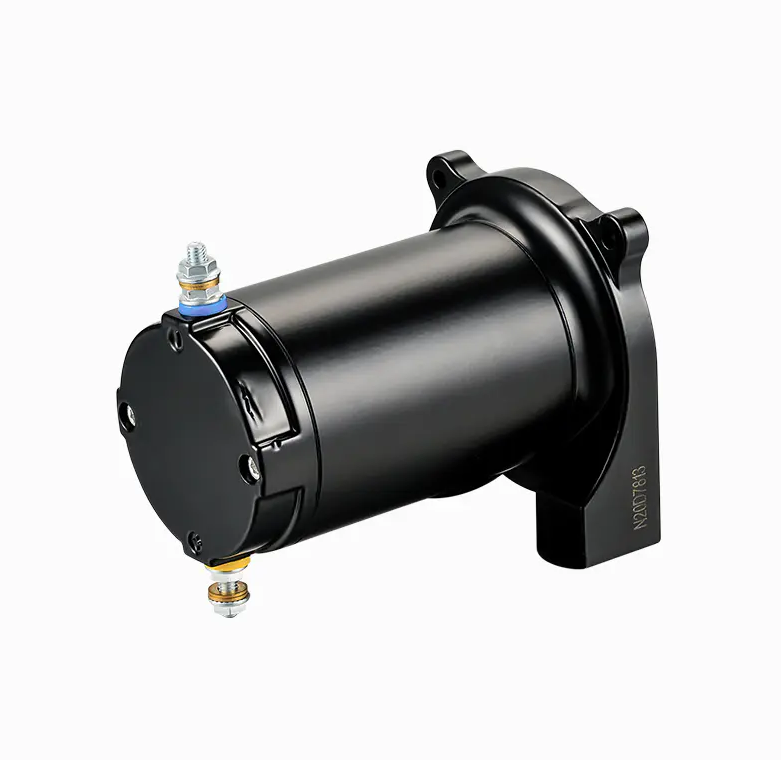Strategies for Achieving Electromagnetic Compatibility in Permanent Magnet DC Motors

The integration of Permanent Magnet DC Motors (PMDC) into modern technological systems necessitates a thorough consideration of electromagnetic compatibility (EMC). EMC is the ability of a device or system to function without causing or experiencing unacceptable levels of electromagnetic interference (EMI). In the context of PMDCs, this involves ensuring that the Permanent Magnet DC motor does not emit excessive EMI that could disrupt other electronic devices, while also being resistant to EMI from external sources. This article will explore the importance of EMC in PMDC applications and discuss various strategies to enhance the electromagnetic compatibility of these motors.
The electromagnetic environment in which PMDCs operate has grown increasingly complex due to the proliferation of electronic devices. These Permanent Magnet DC motors, with their magnetic fields and switching actions, can generate significant amounts of EMI, which can lead to performance degradation, malfunctions, or even system failures. To safeguard against these issues, designers must integrate EMC considerations into every stage of the PMDC development process.
One of the primary factors affecting the EMC of a PMDC is the choice of materials. The permanent magnets used in these motors are a significant source of electromagnetic fields. High-quality magnets with stable magnetic properties can reduce the generation of unwanted EMI. Additionally, the use of laminated steel in the Permanent Magnet DC motor core helps to minimize eddy current losses, which can contribute to EMI.
The design of the Permanent Magnet DC motor's windings also plays a crucial role in EMC. Winding configurations that minimize the loop area of the magnetic field can reduce the radiated EMI. Moreover, the use of shielded cables and proper grounding practices can help to contain the EMI within the Permanent Magnet DC motor and prevent it from affecting other components.
Control systems for PMDCs must also be designed with EMC in mind. The switching devices, such as transistors or MOSFETs, used in the motor's electronic speed controller can generate high-frequency noise. This noise can be mitigated through the use of snubber circuits, which dissipate the energy from voltage spikes, and by employing filters that attenuate high-frequency signals.
Thermal management is another aspect that impacts the EMC of PMDCs. Elevated temperatures can affect the magnetic properties of the permanent magnets and the electrical characteristics of the windings, potentially leading to increased EMI. Therefore, effective cooling systems and proper thermal interface materials are essential to maintain the Permanent Magnet DC motor's performance and EMC.
Testing is a vital component of ensuring the EMC of PMDCs. Compliance with international standards such as the CISPR 11 for industrial, scientific, and medical equipment, and the IEC 61000 series for electromagnetic compatibility, should be verified through rigorous testing procedures. These tests include radiated and conducted emission measurements, as well as immunity tests to assess the Permanent Magnet DC motor's ability to withstand external EMI.
In conclusion, the electromagnetic compatibility of Permanent Magnet DC Motors is a multifaceted challenge that requires a comprehensive approach. By carefully selecting materials, optimizing the design of the Permanent Magnet DC motor and its control systems, implementing effective thermal management, and conducting thorough testing, manufacturers can ensure that their PMDCs operate reliably in an electromagnetically complex world. As technology continues to advance and the density of electronic devices increases, the importance of EMC in PMDC design will only grow, making it a critical consideration for all stakeholders in the industry.
Key Features:
1. Permanent magnet design: The motor incorporates permanent magnets that generate a strong magnetic field, resulting in higher torque density and improved overall efficiency.
2. Brushed technology: This motor utilizes traditional brushed technology, making it easier to maintain and repair. It also ensures smooth communication, providing reliable and consistent performance.
3. Compact and lightweight: The compact and lightweight design of the motor allows for easy integration into electric scooters, without compromising on performance or functionality.
4. Wide speed range: The motor offers a wide speed range, allowing riders to choose their preferred speed for different road conditions and riding styles.
- Art
- Causes
- Crafts
- Dance
- Drinks
- Film
- Fitness
- Food
- Games
- Gardening
- Health
- Home
- Literature
- Music
- Networking
- Other
- Party
- Religion
- Shopping
- Sports
- Theater
- Wellness


